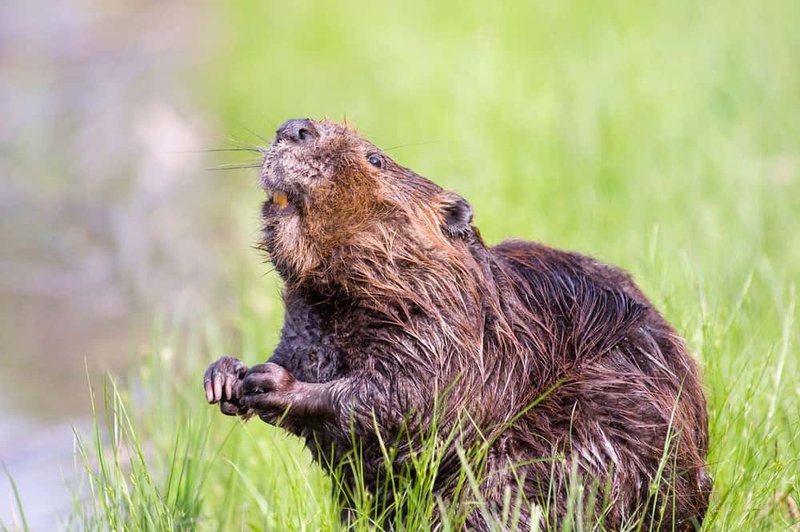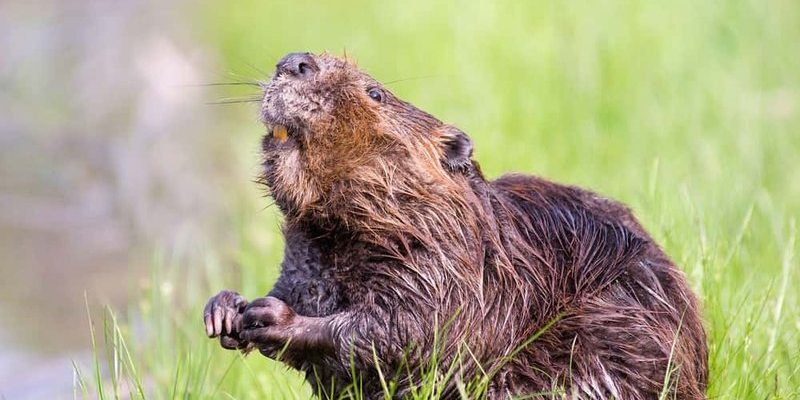
In some cases, beavers can act defensively when they feel threatened, which can lead to dangerous situations. Think of them as little architects with a big bite. They’re not out to cause harm, but if they see you as a threat, they can defend their territory fiercely. So let’s dive into the world of beavers—what they are, how they behave, and the real risks they might pose to humans.
Understanding Beaver Behavior
To grasp the potential dangers, it’s important to understand how beavers behave. Beavers are primarily nocturnal creatures, which means they’re most active during the night. They spend their evenings foraging for food and working on their intricate dams and lodges. When you see one, it’s likely because you’re near a river or stream where they’ve set up shop.
Beavers are social animals, living in family units called colonies. These colonies defend their territory fiercely. If you approach too closely, especially during mating season or when kits (baby beavers) are around, you might trigger a defensive response. Imagine someone stomping on a person’s front lawn without permission; the homeowner is likely to react to protect their space. Beavers are no different.
Physical Risks of Beaver Interactions
While beavers are not aggressive by nature, they can become dangerous if they feel threatened. Their most notable weapon? Those powerful front teeth. Beavers have large, chisel-like incisors designed for gnawing wood. In a defensive situation, they can bite with significant force. A beaver bite can cause serious injury, leading to painful wounds that may require medical attention.
Here’s the thing: beavers rarely attack humans without provocation. Most encounters end peacefully, often with the beaver swimming away at the sight of a human. However, if you surprise one, especially near its lodge, it might see you as a threat. It’s crucial always to keep a safe distance and respect their space.
Beavers and Disease Transmission
Another consideration when thinking about the dangers posed by beavers is the potential for disease. Beavers can carry certain parasites and diseases that may be transmitted to humans, such as Giardia, which can lead to gastrointestinal issues. If you’re in areas where beavers are common, it’s wise to avoid drinking untreated water from streams or lakes they inhabit.
The risk of disease isn’t a reason to panic, but it’s a good reminder to practice caution. Just like you wouldn’t eat food that fell on the ground, you should also be mindful of where you’re getting your water.
Protecting Yourself Around Beavers
So, how can you enjoy beaver watching without getting caught up in any dangerous situations? The first step is to maintain a safe distance. Observing from afar allows you to appreciate their work without encroaching on their territory. If you’re hiking in areas known for beaver activity, look for signs of their presence, like gnawed trees or dams.
If you happen to spot a beaver, keep your cool. Don’t approach it, make loud noises, or try to feed it. Instead, sit back and watch it from a distance. If it seems agitated or starts slapping its tail against the water, it’s a clear sign to back off. That tail slap is like a warning bell, signaling that the beaver feels threatened.
When to Seek Help
There are times when you might encounter a beaver that seems sick or injured. In such cases, it’s best to contact local wildlife authorities for guidance. They have the expertise to handle these situations safely and humanely.
Sometimes, beavers might even build dams in areas that cause flooding or disrupt human activities. If that happens, it’s important to call the proper authorities instead of trying to handle the situation yourself. They can assess the situation and determine the best course of action without endangering either party.
Emphasizing Respect for Wildlife
Ultimately, beavers deserve our respect as part of our natural ecosystem. They play crucial roles, like improving water quality and providing habitats for other species. Understanding their behavior and the potential risks involved helps us coexist peacefully.
Adopting a mindset of respect not only keeps you safe but also helps protect these remarkable creatures. After all, when we respect wildlife, it benefits everyone involved—including the beavers.
In the end, while beavers can pose some threats to humans, especially when provoked, they’re not inherently dangerous. Just like we wouldn’t want a bear wandering into our backyard, beavers appreciate their personal space. By maintaining distance, being mindful of their behavior, and educating ourselves about their habits, we can safely enjoy the beauty and importance of these fascinating creatures.
So, next time you spot a beaver busy at work, remember to appreciate it from afar. They’re vital players in their ecosystem—and with a bit of respect, we can ensure a harmonious relationship.

